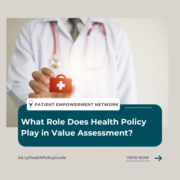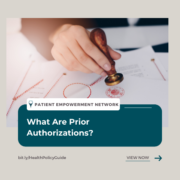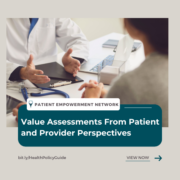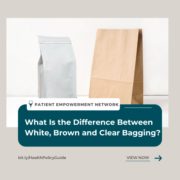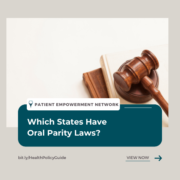The Controversial Conundrum of Co-Pay Accumulators And What to Do About It
Prescription medications can be super expensive so, it’s a good thing that there are assistance programs available to help patients cover some of the costs. Assistance is often provided by charities, nonprofits, or drug manufacturers, and is designed to offset the cost of treatments and medications. The only catch is that there are now other programs in place that seem to negate any of the benefits that the assistance programs provide.
If it sounds confusing, that’s because it kind of is, but the simplest explanation is this: Pharmaceutical companies, and other organizations, often offer programs to offset the high cost of medications. The programs are known as copay assistance programs, or sometimes coupon programs or copay savings programs. Manufacturers or charitable organizations can cover part of the cost of medications, relieving patients of some of the burden of meeting the cost of their copays and annual maximum out-of-pocket expenses. The assistance provided is capped at a maximum amount, and any contributions the assistance programs make to the cost of the medications can be applied to the patient’s deductible and out-of-pocket expenses until the maximum amount is reached.
However, in 2018, in response to the copay assistance programs, insurance companies and pharmacy benefit managers (PBMs) created copay accumulator programs. The copay accumulator programs still allow patients to get assistance from the drug manufacturers or other groups, but they prohibit that assistance from being applied toward a patient’s deductible or annual maximum out-of-pocket expenses. So, once a patient uses up any assistance, the patient is still responsible for their entire copay and maximum out-of-pocket expenses before their full insurance benefits kick in. Patients with a high deductible, or a separate pharmacy deductible, could end up paying more over time because it will take them longer to meet their deductible and receive full insurance benefits.
There are also similar programs known as copay maximizer programs in which the copay assistance maximum amount is applied evenly throughout the year, but still doesn’t count toward the patient’s deductible and out-of-pocket maximum. In the copay maximizer programs, the amount the patient has to pay is more balanced over the year, but it does not lower the overall amount the patient is responsible for paying.
Since arriving on the scene, the copay accumulator programs have been controversial. Patient advocacy organizations say the accumulator programs are unfair. Organizations such as the Immune Deficiency Foundation (IDF) have noted that it doesn’t make sense that the source of the payment for the medication should matter. If medications are paid for by the patient, the payment counts toward the deductible, but if the medications are paid for by someone else, the payment doesn’t count toward the deductible. Therefore, insurance providers are effectively collecting the deductibles and out-of-pocket maximums twice. In January 2021, the American Society of Clinical Oncology (ASCO) released a position statement regarding copay accumulators and copay maximizers. The ASCO is opposed to the programs and calls them harmful.
On the other hand, PBMs and insurance providers say that copay accumulator programs are beneficial because they encourage patients to choose lower cost drug options. They argue that it is the copay assistance programs that are unfair because they encourage patients to use more expensive brand-name drugs instead of generics or lower cost brands, which increases premiums. In addition, they claim that, rather than actually reducing the cost of the medications, assistance programs transfer the cost of the medications onto the PBMs and insurance providers, which also leads to increased premiums.
Either way, it is the patients who are most affected, and some see copay accumulators as blatant discrimination against people with chronic and complex illnesses, such as cancer, because they don’t often have a choice for generic or lower cost medications. These patients rely on specialty brand prescriptions for treatment and recovery. Many also have high deductibles or are required to pay a percentage of the prescription cost rather than a flat amount.
Studies indicate that the result of copay accumulator programs is poorer health outcomes and possible higher costs to the healthcare system. The extra costs often prevent patients from using specialty therapies or following the doctor recommended treatments. More than one in four specialty brand prescriptions are no longer filled when patients have to pay toward their deductibles for them. One study found that patients who have health savings accounts with an accumulator program for autoimmune drugs filled their prescriptions less often and were more likely to discontinue their prescriptions. Another study found that higher prescription copayments meant that patients, especially older women, were less likely to take their medications as prescribed. Failure to follow treatment as prescribed could be potentially life-threatening for many patients with cancer and other complex illnesses.
Initially there was a restriction on copay accumulator programs. They could only be used for medications that also had a generic version, but in May 2020 the Centers for Medicare and Medicaid Services (CMS), a division of the Department of Health and Human Services ruled that insurance companies could use the copay accumulator programs without any restrictions. The issue is not settled with CMS and more rulings about copay accumulators are expected. Organizations like the ASCO recommend that CMS should ban the use of the accumulator programs and that federal and state governments should pass legislation banning them as well. They further recommend that insurance companies and PBMs should discontinue the copay accumulator programs.
IDF is one of the organizations that is trying to ban copay accumulators at the state and federal level. As of spring 2022 Arizona, Arkansas, Connecticut, Georgia, Illinois, Kentucky, Louisiana, Nebraska, North Carolina, Ohio, Oklahoma, Tennessee, Virginia, Washington, West Virginia, and Puerto Rico have passed legislation banning copay accumulators.
In addition to legislation at the state level, federal help may be on the way. In November 2021, a bipartisan group of congressional representatives introduced H.R. 5801, the Help Ensure Lower Patient (HELP) Copays Act. Part of the bill ensures that copay assistance gets applied toward deductibles or out-of-pocket maximums. However, the last action on the bill was also in November 2021 when it was referred to the subcommittee on health.
While waiting for the laws to catch up with the implementation of the copay accumulator programs, there are things patients can do to protect themselves from high out-of-pocket expenses. Most importantly, patients need to be aware of copay accumulators, and use that awareness to carefully read their insurance plans before enrolling. It can be difficult to determine if the insurance plans contain copay accumulator programs because the language is often unclear and can lack transparency. The name is confusing, copay accumulator doesn’t exactly describe what the program is, and each provider uses their own name for the programs. Other names include: Out-of-Pocket Protection Program (Express Scripts), True Accumulation (Caremark), and Coupon Adjustment: Benefit Plan Protection Program (United Healthcare). Copay accumulator programs have also been implemented in the middle of a plan year, without notification, so many patients don’t know they have one until they get stuck with a large bill. The best way to find out if a plan contains a copay accumulator or maximizer program is to call the insurance provider’s customer service number and ask them directly. Be sure to specifically ask whether or not the plan prohibits third party (manufacturer, charity, or nonprofit) contributions from counting toward the deductible and out-of-pocket costs.
See More from the Health Policy Activity Guide
Sources:
Brooks, Amanda. “Copay Accumulator Programs: What Patients Should Know.” GoodRX Health, June 18, 2020, https://www.goodrx.com/insurance/health-insurance/copay-accumulator-programs-cms-ruling. Accessed May 10, 2022.
Fein, Adam J. “Copay Accumulators: Costly Consequences of a New Cost-Shifting Pharmacy Benefit.” Drug Channels, January 3, 2018, https://www.drugchannels.net/2018/05/copay-accumulators-costly-consequences.html. Accessed May 8, 2022.
“American Society of Clinical Oncology Position Statement: Copay Accumulators and Copay Maximizers.” asco.org, January 21, 2021, https://www.asco.org/sites/new-www.asco.org/files/content-files/advocacy-and-policy/documents/2021-CopayAccumulatorsStatement.pdf. Accessed May 10, 2022.
Immune Deficiency Foundation. “Support the HELP Copays Act and Fight Unfair Copay Accumulators.” primaryimmune.org, December 2, 2021, https://primaryimmune.org/news/support-help-copays-act-and-fight-unfair-copay-accumulators. Accessed May 9, 2022.
National Conference of State Legislators. “Copayment Adjustment Programs.” ncsl.org, April 4, 2022, https://www.ncsl.org/research/health/copayment-adjustment-programs.aspx#State. Accessed May 11, 2022.
Jennifer Lessinger is a professional writer and editor who learned the value of patient empowerment during her struggle with a hard-to-diagnose and complex endocrine disorder.


